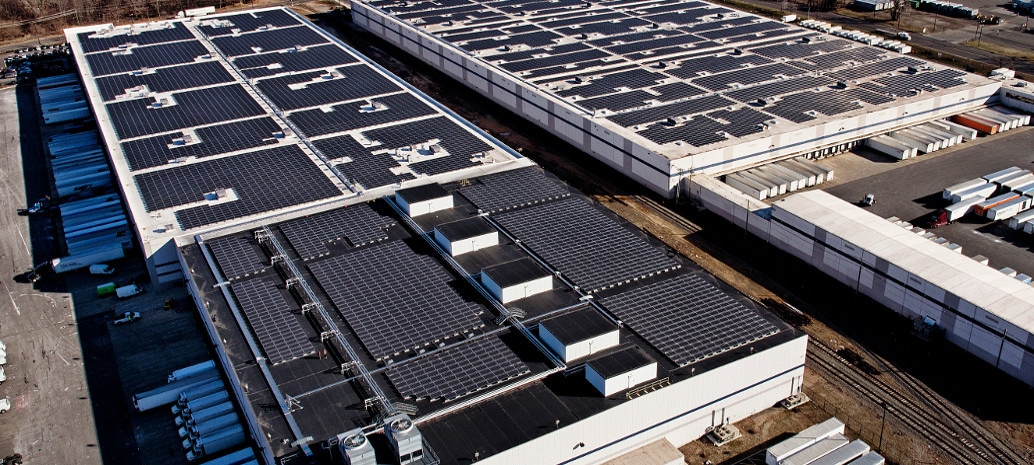by Soltage VP of Sales and Marketing Marc Miller
 The fast growth of America’s corporate renewables market isn’t news – a recent AEE report found 71 of Fortune 100 companies, and 215 of the Fortune 500, have renewable energy or sustainability targets. But this growth has been far from even, and has largely been limited to the 38 states and Washington, D.C. with policies enabling Virtual Net Metering (VNM), shared solar programs, or organized electricity markets.
The fast growth of America’s corporate renewables market isn’t news – a recent AEE report found 71 of Fortune 100 companies, and 215 of the Fortune 500, have renewable energy or sustainability targets. But this growth has been far from even, and has largely been limited to the 38 states and Washington, D.C. with policies enabling Virtual Net Metering (VNM), shared solar programs, or organized electricity markets.
Some analysts have attributed difficulty reaching the corporate customer market to an inability of national developers or financiers to provide customized proposals, as well as a lack of adequate roof or ground space to site renewable energy generation. But for the most part, corporate renewable contracts have taken place within organized markets where incentives are aligned for corporate customers to install solar or participate in projects offsite.
A large untapped market exists outside of these favorable locations in which corporate customers are missing out on the chance to save money and make their operations more sustainable. This means we need new approaches to connecting corporate demand to renewable energy in states where businesses aren’t able to purchase third-party electricity supplies – but how can all American businesses access solar energy without installing behind-the-meter projects or enacting statewide policy changes?
Opening Corporate Customers To Solar Without Virtual Net Metering
The key to unlocking the rest of America’s corporate renewables market may be considering an existing but under-appreciated approach to the corporate renewables market: a contract for differences (CFD). In states with legislation enabling VNM/shared solar, corporate customers receive credit on their energy bills from electricity generated by solar facilities located away from their facilities.
But in states where corporate customers are unable to connect to off-premise projects through VNM/shared solar, a CFD complementary strategy can bridge the gap until enabling legislation is established.
Through this lesser-known approach, corporate customers in states outside of organized markets or without rules enabling VNM/shared solar can leverage their power demand to participate in renewable markets, secure utility bill savings, and hedge against long-term power volatility without encumbering their facilities with onsite generation assets.
This contracting process enables developers to sell power in deregulated markets from a solar asset to a corporate buyer, but typically only offsets the generation component of the bill. Under this contracting approach, which is sometimes called a swap or a fixed-for-floating contract, the customer buys a set volume of power from their retail electricity supplier and solar developer at a fixed price, but the solar developer then agrees to reimburse the customer at a variable rate based off an index price.
The customer gets price certainty of a fixed-price contract based on market rates with a hedge against prices rising over time, and the developer gets demand certainty as a hedge against being long on power supply or declining prices while earning a return.
For example, if a customer is entering into an agreement to pay a solar developer .07 cents per kilowatt-hour under a fixed price contract, the solar developer then enters into a similarly sized contract for that volume with a customer at a floating rate. If the market price of power rises above .07 cents, the customer earns all the value above that mark, but if the market price of power falls below it, the customer pays the developer the differential – still effectively paying .07 cents.
Corporations Can Help Their Cause By Lobbying For Enabling Policy
CFD is certainly a good bridge strategy, but the ultimate goal for corporations, utilities, and regulators should be identifying and enabling VNM/shared solar policy solutions that work for all involved parties.
Corporate renewable energy opportunities exist through VNM in a small number of states and through CFD in nearly all states, but VNM could be unlocked for businesses regardless of size or location in states where it currently does not exist if policymakers adhere to several general policy guidelines, including:
- No arbitrary or unclear cap on VNM capacity that can access a given market, to prevent projects from being stranded in the development process if the cap is reached earlier than expected
- Open up VNM for all electricity-consuming customer classes, not just residential or municipal, to recognize corporations should be able to lock in energy savings and prevent them leaving one state for another with favorable policies.
- Corporate renewable procurement policy should be state-driven, not utility-driven, to ensure concerns about declining utility profits do not prevent corporate savings.
Retail energy prices are at record lows now due to historically low natural gas prices, but corporate customers shouldn’t get complacent and assume this trend will continue. Energy commodities are inherently volatile, and subject to swings, while renewables offer long-term price certainty. And with VNM or CFD, corporations have the ability to source power below retail utility prices without building on-site generation.
State legislators and regulators would be wise to expand VNM/shared solar across all fifty states to provide corporate, municipal and residential customers an equal opportunity to purchase clean renewable energy – especially in states with existing solar programs, where rooftop or behind-the-meter projects have been tapped, and in emerging states with solar programs able to spark development.
Governments value the opinions of corporations due to their ability to create jobs and generate tax revenue. Utilities need to embrace solar development within their service territories and not thwart it; their customers demand and want clean emission free electricity from their local utility provider as a means to reduce greenhouse gas emissions and spur economic growth.
Until solar developers are able to utilize VNM as a preferred renewable power sales strategy, corporations seeking renewable opportunities should explore the CFD contracting approach – there’s no reason customers should be locked out of accessing solar energy today.
This content is protected by copyright and may not be reused. If you want to cooperate with us and would like to reuse some of our content, please contact: editors@pv-magazine.com.








Hmm, I thought that the number of states/utilities/regulators who allow VNM is tiny. Are you sure that over 30 states allow? I don’t think so…